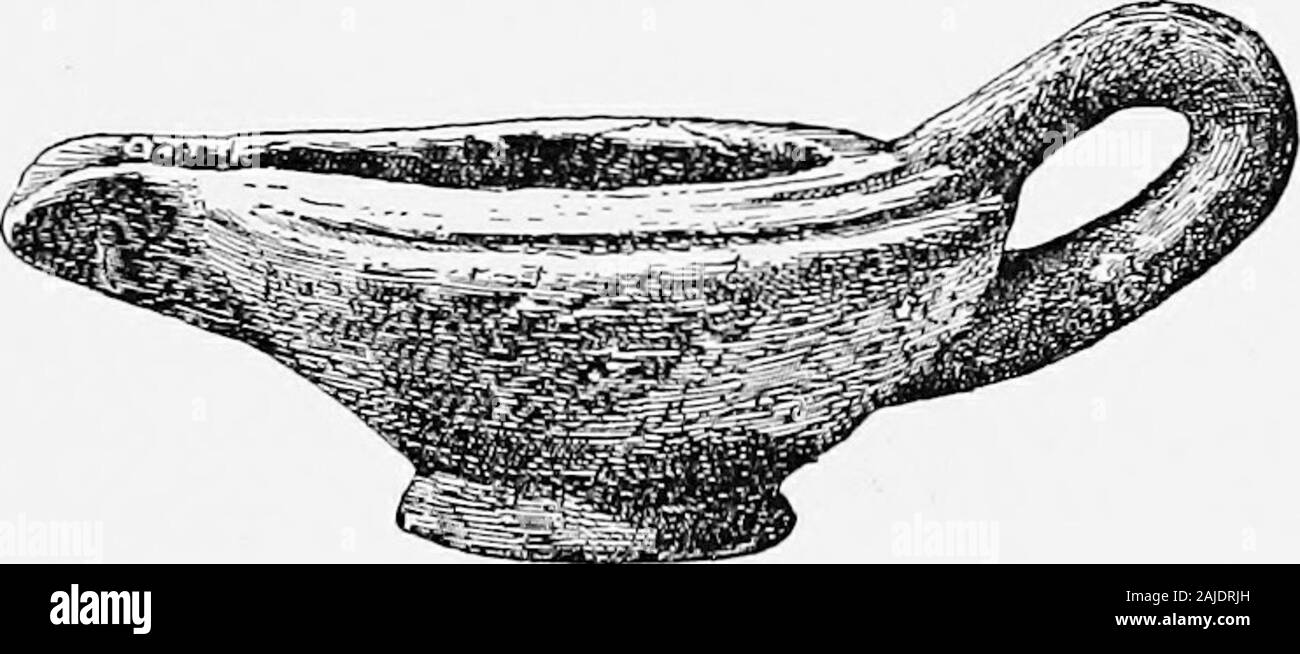Ægean archæeology; an introduction to the archæeology of prehistoric Greece . werecertainly used for the most ordinary purposes, at allperiods rough undecorated ware (in L.M.III, usuallyred) was also used, and we are beginning to be able tosort this out also. The town-ruins of Crete haveproved veritable storehouses of the ordinary roughWare of everyday use, especially Gournia. Rouleaux ofsmall cups have been found, the tea-cups of theordinary Minoan household. Basins, pans, saucepans, POTTERY 111 and kettles are common, a particular form of tripodkettle having evidently been popular (Fig. 39).

Image details
Contributor:
The Reading Room / Alamy Stock PhotoImage ID:
2AJDRJHFile size:
7.2 MB (297.6 KB Compressed download)Releases:
Model - no | Property - noDo I need a release?Dimensions:
2400 x 1042 px | 40.6 x 17.6 cm | 16 x 6.9 inches | 150dpiMore information:
This image is a public domain image, which means either that copyright has expired in the image or the copyright holder has waived their copyright. Alamy charges you a fee for access to the high resolution copy of the image.
This image could have imperfections as it’s either historical or reportage.
Ægean archæeology; an introduction to the archæeology of prehistoric Greece . werecertainly used for the most ordinary purposes, at allperiods rough undecorated ware (in L.M.III, usuallyred) was also used, and we are beginning to be able tosort this out also. The town-ruins of Crete haveproved veritable storehouses of the ordinary roughWare of everyday use, especially Gournia. Rouleaux ofsmall cups have been found, the tea-cups of theordinary Minoan household. Basins, pans, saucepans, POTTERY 111 and kettles are common, a particular form of tripodkettle having evidently been popular (Fig. 39). TheMinoans used pottery for purposes for which weusually employ glass, wood, and metal. As in modernEgypt, boxes and cupboards were made of pottery ;besides kettles, fireboxes of hard clay, censers (Fig. 40), lamps (Fig. 41), loom-weights, and iishing-weights ofclay are common; besides objects for the manufactureof which we ourselves employ clay, such as gutters, drainpipes (Fig. 39, 5), and bricks. Clay was also usedas well as stone to make moulds for casting metalobjects.. Fig. 41.—Crete ; pottery lamp from Palaikastro.British Museum. Scale . CHAPTER v.—TOWNS, HOUSES, PALACES, FORTRESSES, ROADS, ETC. WE now turn to the buildings which were erectedby the Aegeans of the Stone and Bronze Ages, the ruins of which have proved to be such storehousesof relics of the art and civilization of their time, and haveat the same time of themselves given us moderns such adeep impression of the power and complexity of thecivilization that created them. Those of my readerswho have visited Knossos and Phaistos, Mycenae, andOrchomenos, will not easily forget the impression oftremendous energy that they give. And, more than allthe palaces of Crete, does the monumental Treasuryof Atreus at Mycenae give this impression. TheTreasury of Atreus is a relic of a civilization greaterthan that of the Incas and as great as that which pro-duced the temples of Luxor and Karnak. Thesebuildings are the wi